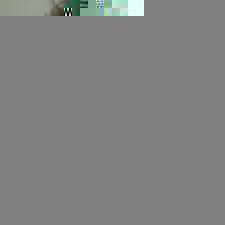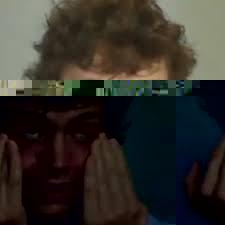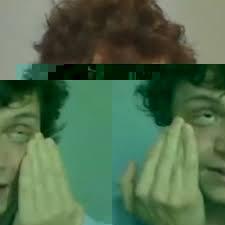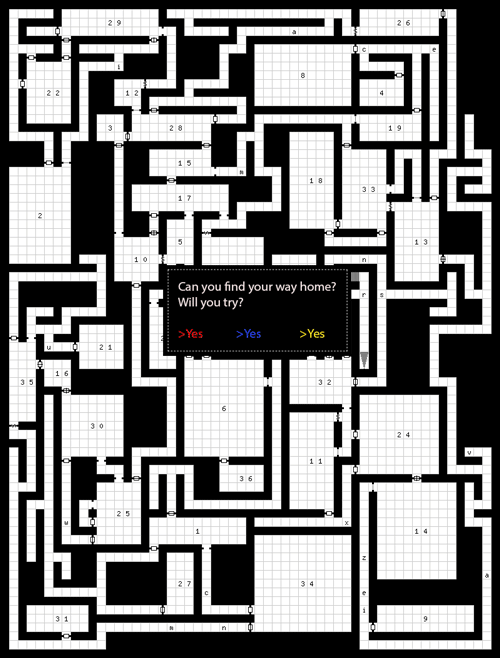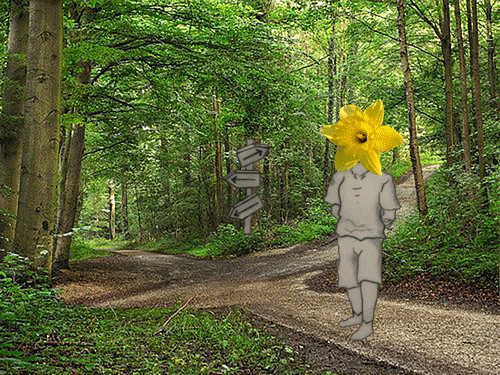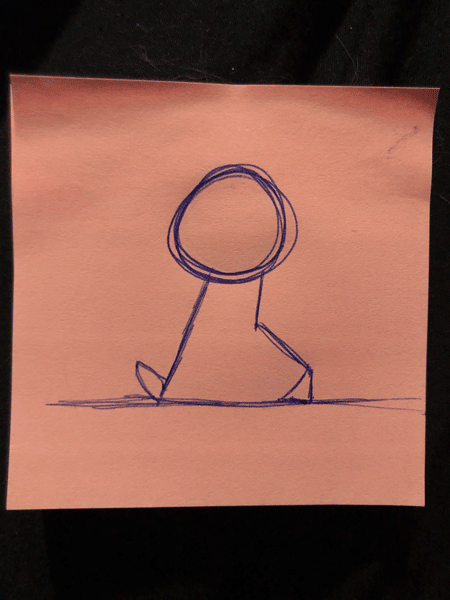Video
tumblr
Beyond Narratives Assignment-Solipsism
2 notes
·
View notes
Text
Assignment 3-Written Statement and References
Written Statement-Solipsism
In Solipsism, the viewer is presented with a short animated video; focusing on the shared human sense of existential fear and dread, and the reactions we have when faced with the uncertainness of our reality. The video explores not only how we deal with these feelings, but how sometimes the ways in which we try to alleviate them can become their own source of fear and uncertainty. Escapism, in particular, is often used as a temporary fix; being defined as the “tendency to seek distraction and relief from unpleasant realities, especially by seeking entertainment or engaging in fantasy.”
In animation spaces, we are able to create and control “fake” realities that would otherwise be unattainable; living through them vicariously, and, as a result, the media we consume becoming a desperate search for satisfaction and relief. Likewise, the story-telling ability of animation allows us to access not only a limitless reality, but one in which we are entirely in control of the plot, content, and ending. It provides a temporary escape to a story we can ideally include ourselves in, in order to avoid a reality we are unsure of.
Our consistent engagement in this type of media-based escapism, however, can distort our own perception of what is real and fake. The lines between our reality and the ones we make up can become difficult to tell apart; we can become confused and hesitant about the parts of our identity that exist to the rest of the world, and those that belong solely to the perceptions in our head. Instead of being concerned with the “reality” of our existence, we are now forced to consider whether what is “real” even matters, if it is so easily replaced with "fake”.
The work itself takes a series of animated videos, and re-contextualizes them into a commentary on the elevated state of confusion they can provide when used in an escapist way. The resulting sequence floods its audience with a constant stream of layered and cut-up imagery; overlapping scenes that flow together and then suddenly interrupt one another. Figures are ripped apart and remade, their identity and existence being destroyed and then built anew, as the viewers gaze is fazed in and out of different realities. Music is used over the scenes, and the attention of the audience is forced to switch constantly while they are being told that they will “wash away”; the sound of whispers can also be heard overlapping the music, as if they are the viewers last attachment to their own reality.
The perceived “subject” of the video is a young girl, who is shown to be both disinterested in her surrounding environment, and struggling to cope with it as it changes. As the video progresses, it becomes difficult to focus on one thing for too long, and its disorienting nature makes it unclear as to what is “real” to the subject, and what is contrived. It can be assumed she might not know either.
The work asks the viewer to consider what is a real experience and what is a fake one, and if there is any value in making that distinction; if a fake experience is truly believed to be real, is it any different from a real one? Should it matter if it is different, if it is perceived the same? Is the relationship between our real-world identity and our escapist one harmful, if it begins to blur that line? If your life becomes consumed by this escapist tendency, does the contrived reality have more value than the one you were born into? Does that outlook trick you into escaping so far that the innate fear that your life will “be a wasted one” becomes a self-fulfilling prophecy? Or is it the only way to give it the meaning you’re looking for?
It is a fear of non-satisfaction, alleviated by way of pseudo-satisfaction. We are scared of our own reality, in one way or another, but it is those feelings towards the fabricated ones that seem to define us.
References:
Chelou, Chelou - Out Of Sight, Youtube, December 04 2018, https://www.youtube.com/watch?v=5Yz2t1QeIHQ&list=PL_6ixfsBK3zn85Wcf2xDKEF0mpq4fw97L&index=1
Qwerty334, Blank Slate (2009 Demo) - Circa Survive, Youtube, November 4 2011, https://www.youtube.com/watch?v=-aFzEisCIPw&list=PL_6ixfsBK3zn85Wcf2xDKEF0mpq4fw97L&index=7
Oxford Languages and Google - English. (n.d.). Retrieved December 06, 2020, from https://languages.oup.com/google-dictionary-en/
Rainbow Kitten Surprise. Rainbow Kitten Surprise - It's Called: Freefall [Official Video], Youtube, January 28 2019, https://www.youtube.com/watch?v=U2WDdccgaDY&list=PL_6ixfsBK3zn85Wcf2xDKEF0mpq4fw97L&index=2
The Crimson Beast, Duke's whispering.avi, Youtube, October 17 2012, https://www.youtube.com/watch?v=gMiAMEnkrmk&list=PL_6ixfsBK3zn85Wcf2xDKEF0mpq4fw97L&index=6
Tigersushi Records, DyE - Fantasy - Official Video, Youtube, October 19 2011, https://www.youtube.com/watch?v=6QFwo57WKwg&list=PL_6ixfsBK3zn85Wcf2xDKEF0mpq4fw97L&index=4
Vincent rocco, [HD] Trippy Animation courtesy of Anthony Francisco Schepperd, Youtube, September 30 2012, https://www.youtube.com/watch?v=w6K0iDsu0TM&list=PL_6ixfsBK3zn85Wcf2xDKEF0mpq4fw97L&index=4
0 notes
Text
Activity 8-Definitions
Alpha Channel
The term “Alpha Channel” refers to an extra channel in relation to those that define the colour values of pixels in an image/video. It is a colour component that represents the level of transparency of a colour, and determines how pixels will render when blended with one another. They are typically used to define specific areas of an image/video (i.e determine a sections transparency or to keep only a portion of a saved image/clip). They are a useful tool for blending clips/images into a single work.
Masking
The term “Mask” refers to the limited visibility of a layer. They are created by drawing shapes or pathways onto a layer. When a specific part of a layer is selected, the section is isolated, and the sectioned-off area becomes the only visible part of the layer.
Blend Modes
The term “Blend Mode” refers to the feature included in many digital editing softwares, in which it is determined how layers will interact and be blended together. The merging of layers can be controlled in different ways; some blending modes modifying colour values, transparency levels, or pixel dissolve in order to visually combine multiple layers.
Keying
The term “Keying” refers to the transparency of a specific colour in an image. It is most commonly associated with greens screens (or sometimes blue screens). The process of “keying” causes any selected colour in a video clip to become transparent, modifying the alpha channels of the selected colour-matching pixels in order to achieve this.
Video References:
https://www.youtube.com/watch?v=_fVjJmX2GYs
https://www.youtube.com/watch?v=z5zVE3rL_Ds
https://www.youtube.com/watch?v=w6K0iDsu0TM
https://www.youtube.com/watch?v=9yUHHgfl-6o&t=9s
0 notes
Text
Activity 7-Short Paragraph
Laughs Over Screams
In modern cinematography, particularly in action and horror films, we are often presented with scenes of people in anguish or distress. We are meant to feel empathy towards these characters, and seeing them crying, screaming, and wailing in pain tend to evoke a strong, and almost visceral reaction from the viewers as we watch.
I wanted to see if we felt any different when laughs were played over what was once a set of overly dramatic screams and cries. I used similarly over-the-top laughter on top of the videos, some of them laughing so hard they almost sound like the screams they were meant to replace; I can’t tell if the result is more disturbing or less, and every time I play it I think that I change my mind a little bit.
Reference Videos:
https://www.youtube.com/watch?v=-lkqva3g958
https://www.youtube.com/watch?v=BQwPeHctfw8
https://www.youtube.com/watch?v=Xe2OaOrvmOU
0 notes
Text
Activity 6 Definitions and Example
Deep Remixability
Deep remixability can be described as the capacity to be able to remix content, media, working methods and techniques, and forms of expression and representation (in respect to the digital age). The development of speciality software (for example, After Effects) made this new hybrid “language” possible. It pertains to the ways in which a project can be moved from one software application to another, and concerns the visual aesthetics and media composition of both moving and still images.
Variable Form
Variable form can be described as the representation of data as a set of variables, and the ability to manipulate those variables, including geometric positioning, colour, 3-D form etc.
When the development of specialty softwares allow us access to these variables, it encourages the user to change and manipulate them; allowing a large level of control and adjustment ability over the visual aspects of a project.
Continuity Turn
Continuity turn can be described as the ideas surrounding a continuous change of variables, and how we can create visual dimensions that can constantly be changed in a project. It is a consequence of variable forms, as the increased control over a project allowed users to create continuous change within a project using certain variables; for example, ever-changing colour, shape, form, or transparency.
Metamedium
Metamedium can be described as the combination of different mediums (such as animation, video, still image, special effect etc.,) into a single medium. As a result of the mediums being digitized, they can now be accessed in a common place, and their resulting combinations can be thought of as a “collection” of the once separate methods/techniques. The hybrid medium can be exponentially experimented with; inherently involving the combination of different techniques and software applications in order to produce works.
An example of some of these concepts is the promotional video entitled “anthology”, for the television series American Horror Story: https://youtu.be/zmUVU8fdCx8
The promotional video is an example of both variable form and meta medium.
In terms of variable form, each “level” in the video (representing the different seasons) is travelled through, the images flowing into one another as if they were contained in a type of “Russian nesting doll” level system. An effect like this, where the forms in each section were moved to simulate that type of system would only be possible with the manipulation of certain variables (ie geometric positioning or colour, to create the fake sense of space and depth as the video progresses)
In terms of metamedium, the promo combines a few different media types. The inclusion of typography, for instance, is evident in the numbers that pop up between images. The music in the background becomes altered as the video progresses, sometimes mixing with other background sounds.The raw videos used in the making of this video were also likely combined with areas of special effect and animation, in order to create the final product.
References:
After Effects, or Velvet Revolution (Spring 2006) - Lev Manovich
Understanding Hybrid Media (Published in Betti-Sue Hertz 2007) - Lev Manovich
0 notes
Text
Glitch and Glitch-a-Likes Written Statement, Process, and Reference Videos
Written Statement
Glitching does, by its own nature, heavily rely on a sort of “guess and check” system. There is a large focus on experimentation and a certain lack of control over a final product. I wanted to explore the human tendency towards control, and the discomfort we have when we feel powerless over an expected outcome.
Our genuine inclination to control the world around us, to improve and change it for our own betterment, and to recognize that “sense of control” as a source of comfort and stability is a large part of our existence in the world. A world in which we can never actually be in control.
Scientific advancement and human interference in the natural world highlights this; cloning, in particular, presents itself as a direct case of human control over nature. That being said, it is a false sense of control, and results are often uncertain. Sometimes the clone dies in the womb, sometimes major organs fail to develop, and sometimes the animal has severe physical or cognitive issues. We can fit all the pieces together, but we can’t determine exactly how the outcome is going to present itself.
In fiction, hypothetical situations are often created and elevated, and cloned animals or people become out of control, dangerous, or unpredictable. I decided to include certain cinematic references in my initial video sequence. I think they further highlight the scope of the human need for control, as, even when we tell stories about our relationships with power and control, we are still the ones in control of the story.
The video becomes an investigation of the topic itself , as a large part of the work was created by experimentation and uncertainty. It is not what is typically expected of the digital medium, it is pixelated and corrupted, and the audio occasionally changes volume and pitch. A certain level of control existed in the beginning process of the video, as I got to decide what visuals I wanted in the initial sequence. However, as soon as the glitching process was introduced to the work, all control was relinquished, and the end product was one of chance and unfamiliarity.
Process
1. I began by selecting some video clips I wanted to use (I got mine from youtube), and used an online downloader to save them to my computer
2. Using Adobe Premier Pro, I spliced the clips together into a short sequence, and saved two copies (one original and one to experiment on)
3. I opened the video copy in Adobe After Effects, and downloaded the plug-in called “Data Mosh”
4. After launching the plug in, I experimented with different input options (the program allows you to duplicate or remove frames at different durations, intervals, ends, and intensities)
5. I continued to test numbers and settings at random, until I got something I liked. After doing this multiple times on different layers, I cut and pasted different sections of different trials, and placed them over the original video
6. Finally, I experimented with the audio, creating layers that only contributed to a certain sections volume or pitch. Once I was finished, I rendered the video and saved it as a new file.
Reference Videos
Human Cloning- https://www.youtube.com/watch?v=7tbxN5uwaqA&t=67s
Jurassic Park Cloning Video- https://www.youtube.com/watch?v=iMsJe3TymqY
Jurassic Park Lunch- https://www.youtube.com/watch?v=0Nz8YrCC9X8
Doctor Claims He Cloned Human Embryos- https://www.youtube.com/watch?v=LpiSdoFri2s&t=54s
0 notes
Text
Activity 4-Original Image and Process
Image 1
-took the jpeg image file, and opened it in the program TextEdit
-wrote the word “red” on every text line
Image 2
-took the jpeg image file, and opened it in the program TextEdit
-wrote colour words in the text (ie, blue, purple, white) at random
Image 3
-took the jpeg image file, opened it in TextEdit
-copied the entire text, and pasted 10 times at random
Image 4
-took the jpeg image file, opened it in the hex editing program Hex Fiend
-took out lines at random
Image 5
-took the jpeg image file, opened it in TextEdit
-copied the entire text, and pasted 10 times at random
-opened the program in Hex Fiend, took out lines at random
Images 6-8
-took the jpeg image file, opened it in Hex Fiend
-added lines at random (no copying or pasting, just hitting random keys)
Images 9-10
-took the jpeg image file, opened it in Hex Fiend
-added and erased lines at random
Images 11-12
-took the jpeg image file, opened it in TextEdit
-added lines of 0’s in the text at random (0000000000000)
Original Image:

0 notes
Text
Activity 3 Definitions
Datamoshing
Datamoshing is the technique of damaging a video file in order to create a glitch. It is categorized as an effect wherein frames that should change do not, and is most evident between cuts across areas of motion. Datamoshing is achieved by corrupting, removing, or replaying l-frames, causing p-frames to be applied to the wrong image. This causes the movement of one video/set of frames to cross over into another, creating a glitched effect.
Data-bending/Image-bending
Data-bending, or image-bending, is the technique of manipulating a media file of one format, using software designed for media files of another format. This results in a distortion of the file, typically in terms of colour changes, reflected images, or displaced pieces of the file. The process is frequently employed in glitch art, and the term “data-blending” has become a blanket term for manipulating media files at their “core level”, in order to create unpredictable visual effects.
Glitch-a-like vs Natural Glitch
The two main types of glitches are known as Natural Glitches and Glitch-a-Likes.
Natural glitches occur randomly and without intention. Glitch-a-likes, however, are man-made and intentional. They are created by setting up contexts where a glitch can occur, such as data-bending. Both types of glitches can be unpredictable, and contain an element of randomness.
Pixel Sorting
Pixel sorting is the manipulation of an image by selectively ordering the pixels in the rows/columns of an image. There are two main steps involved in this. Firstly, the rows/columns are isolated and split into intervals. Secondly, the pixels in each interval are rearranged based on a specific set of criteria (for example, lightness, saturation, hue, etc.). The resulting effect is a crisp, pixelated look, where pixels appear as if they are being dragged across an image, cut out and pasted, or disintegrating off the screen.
Hardware Bending
Hardware bending, or circuit bending, is a result of physically short circuiting or damaging the hardware of electronic devices in order to create a new visual or auditory effect. This is an often unpredictable process, and, like most techniques used in glitch art, requires a certain level of experimentation.
0 notes
Text
Find Your Way Home-Written Statement
In Find Your Way Home 1 and Find Your Way Home 2, the viewer follows the short journey of three anonymous figures, distinguished only by the different coloured flowers they seem to be wearing. Each are asked to make an initial decision, which path will they follow, in order to reach a place of familiarity. In Find Your Way Home 1, each lost character begins at a crossroads, each ultimately choosing a different path from the others. The yellow figure’s attempt is shown first; failing, he ends at the base of a few large red mushrooms; the red figure follows a different direction, and his path is drawn to a halt as he reaches the edge of a deep blue river; the blue figure, and the only character successful in his choice, happily reaches a small yellow house.
In Find Your Way Home 2, the audience is given a 2D map, in which the journey of the previous three figures is recorded. The map, in an 8-bit style, invites the character to find their goal, and tells them the result of their attempts at the end. They may try again, or stay where they are; and the audience is invited to do the same, allowing them to follow along as if it were their own journey. Both works ask the viewer to consider the ambiguity of choice, pathways, and the perceived success of accomplishment.
0 notes

